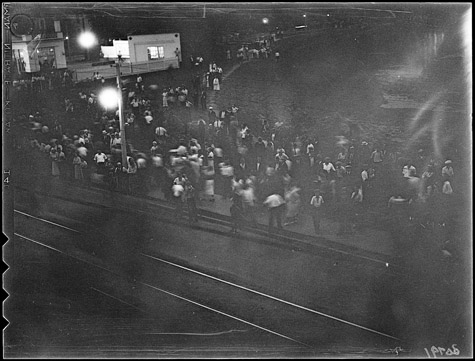This week at the Ethnic Aisle, we’re exploring the past, present and future of racism in Toronto. Racism was and is part of Toronto. Moreover, our racism is evolving. This isn’t a value judgment so much as an observation: as the city changes, so too do our experiences with prejudice, both systemic and personal.
These posts aren’t a referendum on whether each successive generation is getting any better or worse at being racist (we’re saving that for a March Madness-styled tournament post. Haha, just kidding! Maybe). Rather, think of this as crib notes on issues that often get forgotten amongst the greater narrative of Toronto the Good, with a side of self-reflection on our progressive city’s decidedly less-progressive moments.By looking at Toronto’s racism in greater contextual scope, we hope to get the ball rolling on some conversations about how we’re all getting along and where we all hope to end up.
To get things started, we look back at The Past.
Renee Sylvestre-Williams presents a timeline of Canada’s more egregious racist decisions. For example, remember that time our first Prime Minister didn’t believe Asian or First Nations folks should have the right to vote? No? Well read all about it here.
Chantal Braganza gets municipal, exploring how Toronto’s by-laws have been slightly less than accommodating over the years (hint: very passive aggressively. How totally us, right?).
Then, we address the reality of racism in The Present.
Kelli Korducki talks to the Migrant Workers Alliance for Change, and learns some harsh truths about the way Canada treats the racialized internationals who work on our farms.
Lisa Charleyboy dissects last August’s Holy Chuck Burger scandal, when the Toronto restaurant thought it was ok to have a sandwich named the “Drunken, Dirty Half-Breed” on its menu.
Illustrator Roxana Parsa shares her graphic take on the GTA’s downtown/suburban divide.
Sam Tecle show, in stark numbers, how racialization of poverty leaves many non-white Torontonians in substandard housing.
Navneet Alang on paying lip-service to diversity in a city where the media, cultural institutions and wealth are mostly white.
Anupa Mistry talks toLiza Paul and Bahia Watson, the playwrights and actors behind the hilarious Pomme is French for Apple.
And finally, our writers move on to The Future.
Denise Balkissoon argues for purposeful, perhaps policy-based, integration as the key to a less racist future.
Jef Catapang asks the experts: Canadian science fiction writers share their ideas on what “race” is, and where prejudice is going.
and Septembre Anderson wonders if racial profiling by police will always be part of Toronto.
Comment, tweet, write a response post! We’d love if you joined in the conversation.

I have always been amazed, as an American that likes to talk about racism, class, phobias, isms, ists, that there seems to be an urgency to deny the validity of concrete racism in Canada. I’ve encountered a few individuals who think this is more of an “American” problem and “this type of stuff doesn’t happen here.” Well, from personal experience, watching and listening to other peope/peoples in Canada, we all know this type of stuff does happen in Canada. I think part of the power of deflection is distraction. I’ve also witnessed the substantial interlacing prowess of economic discrimination and racism akin to the “American” experience. Do you think there is a reluctance to discuss race and class issues in Canada?
Not on this blog…let’s see what kind of conversations happen this week, especially when we get to the Present posts. Thanks for reading.